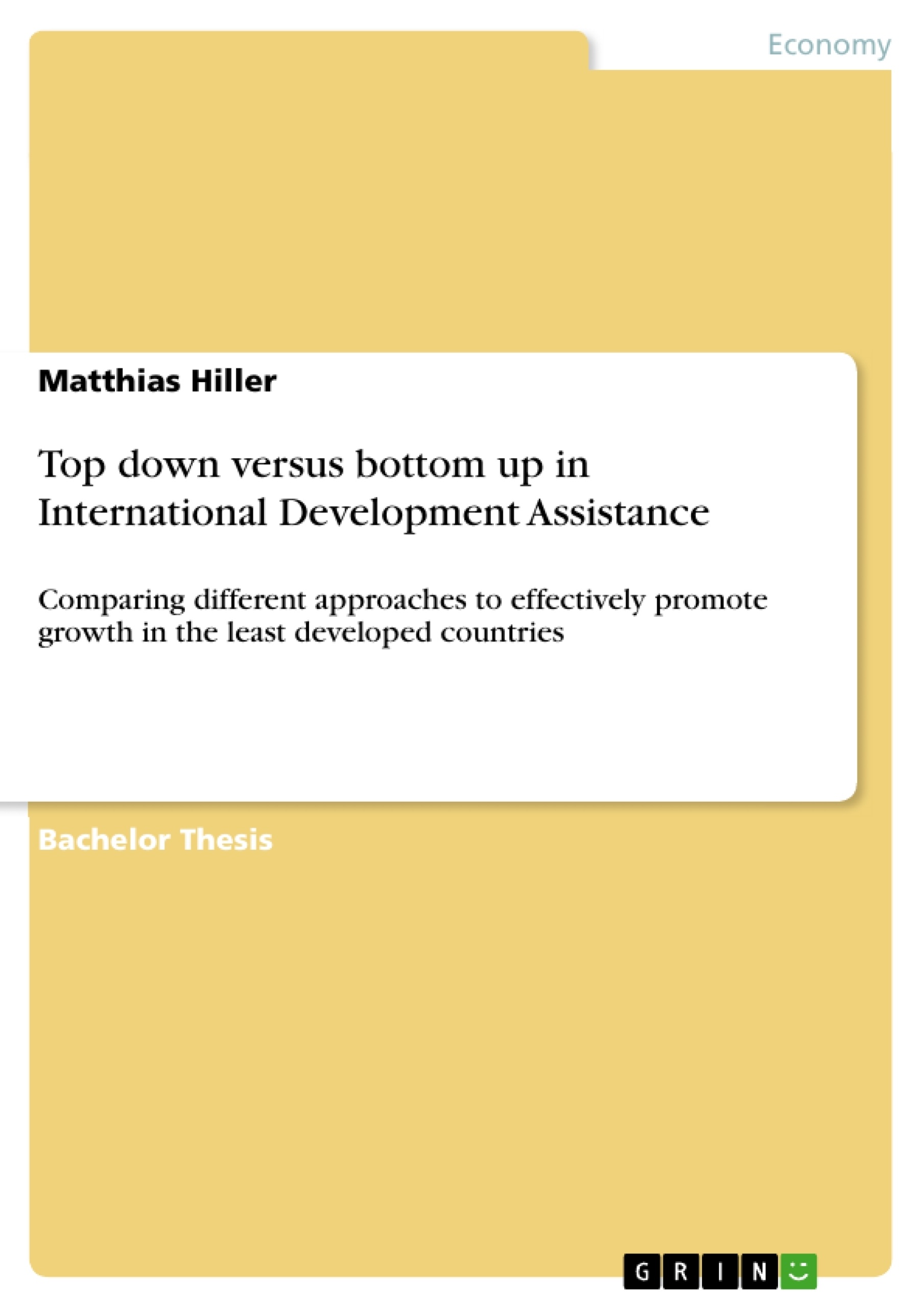Helping less developed countries close the gap to industrialized countries is the goal of a decades long struggle by various institutions likes the IMF, World Bank and NGOs. The various approaches that exist highly differ in the level of society they address. This paper scales the different development measures from top-down to bottom-up – whereas Structural Adjustment Policies (SAP) employed by the IMF are counted as the former and Unconditional Cash Transfers mark the lower end of the scale – to check their respective effectiveness in promoting growth and lasting development. In between the extremes of the scales, light is shed on the Poverty Reduction Strategy Papers (PRSPs) of the IMF, the approach to have the people in need participate in the disbursement of aid (Participation), as well as the usefulness of the Conditional Cash Transfers.
Through the absence of substantial savings, poverty prevents the accumulation of capital and the needed investment for productivity growth. By failing to attract investment, Participation is found to do little to break this vicious circle and lift the least developed countries out of the poverty trap. SAPs embodied the right idea but were to rigorous and paying to little attention to the local conditions present. PRSPs seem a well-working successor to the SAPs by involving the recipient. Cash transfers are economically and ethically promising, but entail the risk of inflation and have no effects on under-investment in infrastructure necessary for supporting large-scale growth. Only a combination of bottom-up and top-down measures presents effective development assistance.
Table of Contents
- Introduction
- Top-down approach
- Structural Adjustment Program and its demise
- The Paris Declaration and the rise of Poverty Reduction Strategy Papers
- Bottom-up approach
- Participation in development assistance
- One Dollar a week - discussing the income transfer
- Top-down vs. bottom-up – fusing the findings
- Outlook
Objectives and Key Themes
This Thesis explores the efficacy of top-down and bottom-up approaches in international development assistance, specifically focusing on their impact on economic growth in less developed countries. It analyzes the historical evolution of these approaches, examining the strengths and weaknesses of both methods and the rationale behind their implementation. The Thesis delves into specific examples of development assistance programs and their effects on recipient countries. It seeks to provide insights into which approach is more effective in promoting sustainable economic growth and improving the overall welfare of target populations.
- Top-down vs. Bottom-up approaches in development assistance
- Effectiveness of macroeconomic measures in promoting economic growth
- Impact of participation and empowerment in development initiatives
- Role of cash transfer programs in alleviating poverty
- Comparative analysis of the effectiveness of top-down and bottom-up approaches
Chapter Summaries
The Introduction delves into the historical context of economic development disparities, highlighting the challenges faced by many developing nations in achieving sustained growth. It introduces the concepts of top-down and bottom-up approaches, emphasizing the theoretical frameworks underlying these strategies. The first section provides an overview of top-down development assistance, exploring the characteristics of the Structural Adjustment Program (SAP) and its evolution. It examines the reasons for the SAP's eventual decline and the subsequent shift towards the Paris Declaration and Poverty Reduction Strategy Papers (PRSPs).
The second section focuses on bottom-up approaches, examining the role of participation in development assistance and its potential to empower communities. It then delves into the concept of cash transfers, specifically analyzing the "One Dollar a Week" program and its implications. The section explores the experiences of various countries implementing cash transfer programs, evaluating their effectiveness and challenges.
Keywords
Key concepts and terms discussed in this Thesis include international development assistance, top-down and bottom-up approaches, economic growth, Structural Adjustment Program (SAP), Poverty Reduction Strategy Papers (PRSPs), participation, cash transfers, and poverty alleviation. The Thesis examines the effectiveness of these approaches in promoting economic development and improving the welfare of targeted populations.
- Quote paper
- Matthias Hiller (Author), 2010, Top down versus bottom up in International Development Assistance, Munich, GRIN Verlag, https://www.grin.com/document/200183




